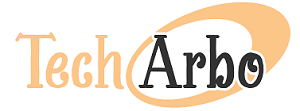From pen and paper to pixels – Making the switch to online notes
For decades, notebooks, legal pads, and sticky notes have been go-to tools for writing down ideas and information. The feel of a pen gliding across paper provides a smooth, familiar thinking space. However, advancements in online note-taking technology have made the switch from analog to digital notes possible for many. Transitioning note-taking to the digital realm offers game-changing advantages, but also requires adapting processes and mindsets rooted in paper traditions.
Choose your digital notepad platform
The first step in going digital with notes is choosing your platform. Consider factors like compatibility across devices, user experience, collaboration capabilities, import/export functionality, offline access, templates, tagging, search, automation, and security. Select the digital notepad that aligns best with your use cases and needs. Resist overcomplicated software. Simplicity helps adoption.
Organize and digitize existing notes
Before abandoning paper methods, take time to organize existing physical notes into a structure that can be digitized. Sort through notebooks, notepads, sticky notes, and filing systems. Organize content together by project, topic, date, or other convention. Once organized, use scanning apps and OCR technology to import paper notes into your digital notepad. Add tags, dates, and searchable data to digitized notes for findability. Back up digitized versions in multiple places for redundancy.
Familiarize yourself with digital functionality
Spend time getting comfortable with the features and functionality of your online notepad platform before relying on it full-time. Test-taking notes via keyboard and digital stylus. Practice searching, tagging, using templates, collaborating, and accessing your notepad from mobile apps and browsers. The more familiar the tool becomes, the easier adopting it will be. Remain patient; digital literacy takes time. Lean on video tutorials to expand skills and maximize capabilities.
Set up note structure and organization systems
To stay organized in the digital notepad, set up sections, notebooks, tabs, pages, and templates to standardize where certain notes live. For example, establish distinct sections for meeting notes, project plans, creative writing, research, recipes, etc. Use titles, tags, tables, and visual elements to structure information within notes. Develop consistent naming conventions. Determine what linear or nonlinear organization system works best. The structure reduces future frustration.
Adjust note-taking workflows and habits
For a full transition to digital notes, existing paper-based habits must evolve. For instance, capture meeting notes directly into your online notepad vs a lined notebook. Use highlighting and comments to annotate instead of pen marks. Record audio to supplement typed notes. Take time after sessions to tidy notes versus waiting to transcribe paper notes later. Build digital workflows that leverage online strengths. Read the full info, click it now https://notesonline.com/notepad.
Use mobility features
A key advantage of online notes is mobile accessibility from any device. Use your smartphone to snap photos, record audio, dictate notes by voice, scan documents, share notes, and more. Install your notepad’s mobile apps on devices you regularly carry. Sync notes to the cloud automatically across gadgets for continuous access everywhere. Embrace mobility to make note-capturing frictionless. Replace emailing files back and forth with smoother real-time co-editing and commenting right in your collaborative online notepad. Your best digital notepad is just a click away.







